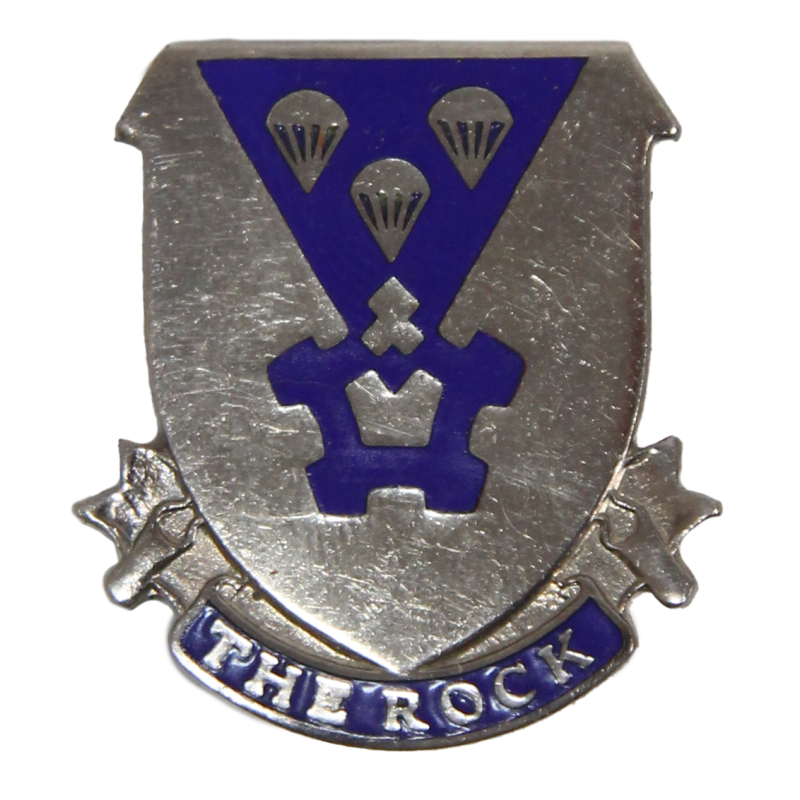




Genuine WWII US Army distinctive unit insignia, 503rd Parachute Infantry Regiment.
Activated in 1941, the 503rd PIR was deployed to the South-West Pacific and made its first combat jump on September 5, 1943 in New Guinea, where the unit kept fighting before being transferred to the Philippines in December 1944. In the meantime, the regiment had become a Regimental Combat Team, following the assignment of the 462nd Parachute Artillery Battalion in March and the 161st Parachute Engineer Company in September.

Genuine WWII US Army distinctive unit insignia, 503rd Parachute Infantry Regiment.
Activated in 1941, the 503rd PIR was deployed to the South-West Pacific and made its first combat jump on September 5, 1943 in New Guinea, where the unit kept fighting before being transferred to the Philippines in December 1944. In the meantime, the regiment had become a Regimental Combat Team, following the assignment of the 462nd Parachute Artillery Battalion in March and the 161st Parachute Engineer Company in September.
The historical artifacts for sale at PARATROOPER’s are intended for collectors, history enthusiasts, historians and museum curators.
These items do not glorify or promote any of the political, ideological or racial opinions related to the global conflicts that bathed the 20th century in blood.
Besides, we remind you that Article R.645-1 of the French Penal Code establishes fines applicable to fifth class contraventions (except in the specific cases of a filming, show or exhibition which refer to historical events) for any individual who wears a uniform, insignia or symbol reminiscent of those worn by members of the various organizations declared criminal in application of Article 9 of the Charter of the International Military Tribunal annexed to the London Agreement of August 8, 1945 – SS, SD, Gestapo, Nazi leaders (the Führer, the Reichsleitung, the Gauleiters and their main collaborators, the Ortsgruppenleiter, the Zellenleiter and the Blockleiter), or reminiscent of those worn by any person found guilty, by a French or International Jurisdiction, of one or several crimes against humanity established by Articles 211-1 to 212-3 or mentioned in Law No. 64-1326 of December 26, 1964.
The Code provides additional penalties, including the confiscation of the items used or intended for committing the offence.
